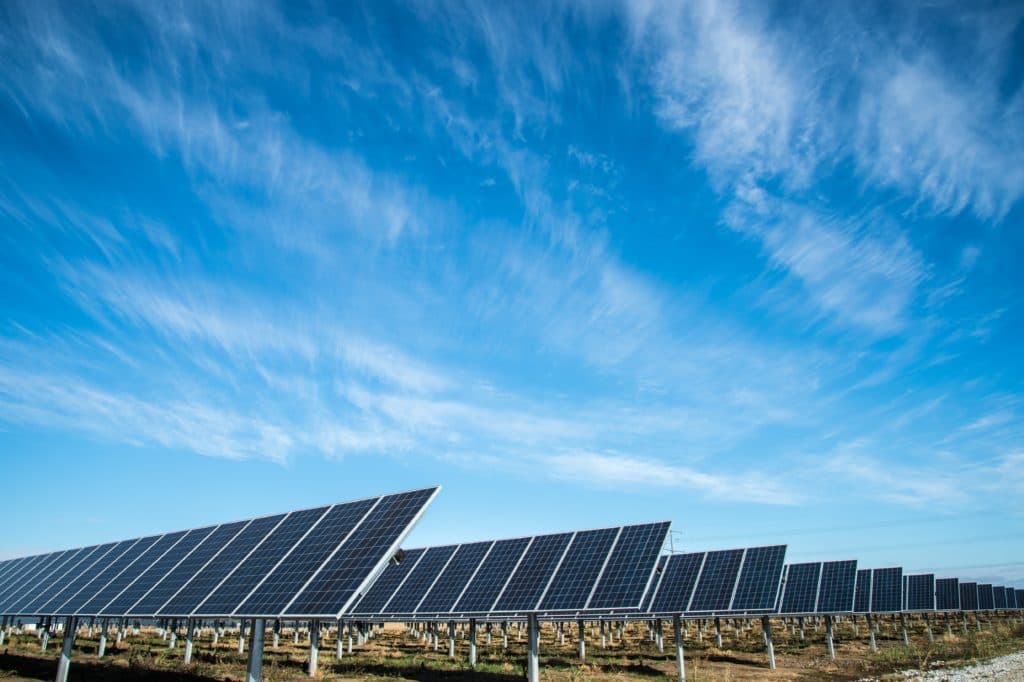At an oak savannah near Eugene, Oregon, TEIP interns and elders carry forward a time-honored tradition, restoring meadow health and renewing relationship with the land
The Ute Mountain Ute Tribe goes solar
Avery White
High Country News

In the southwest corner of Colorado, the sun beats down on the Ute Mountain Ute Reservation. High desert runs to the horizon in every direction, broken only by imposing mesas and Sleeping Ute Mountain. Just under 2,000 people live on the 580,000-acre-reservation, which sprawls across Colorado, New Mexico and Utah. But as temperatures rise with climate change, utility bills rise with them, and the Ute Mountain Ute tribe has begun transitioning to 100% renewable power — a movement towards energy sovereignty they have been forging for almost a decade.
Nations, states and communities around the world are establishing rapid decarbonization goals, including Colorado, which declared a target of 90% carbon-free energy by 2050. With increased pressure for immediate, large-scale changes to energy infrastructure, international policies for expanding renewables have played a critical role in increasing solar technology’s accessibility and efficiency. By combining this evolving technology with local knowledge, the Ute Mountain Ute Tribe is generating energy solutions rooted in its community.
“Our tribe likes to think outside of the box and take risks, and we believe in renewable energy,” said Tribal Community Services Director Bernadette Cuthair. In its first major stride towards net carbon zero, the tribe is building a large-scale solar array through a partnership with GRID Alternatives Colorado, an organization that helps low-income and underserved communities access renewable energy technology and job training. The $2 million project includes 3,500 solar panels that will offset at least 10% of the reservation’s overall energy usage, eliminating about 1,515 tons of greenhouse gas emissions by year one.
The tribe is considering building a large-scale renewable energy business to serve national markets, increase tribal revenue, and provide more training and jobs. “The solar array we’re building now is a 1-megawatt project, but we’re looking into what we could do with 200 or 300 megawatts next,” said Cuthair. “This is just the beginning for us as far as renewables.”
It’s estimated that in just six hours, the world’s deserts receive more energy from the sun than the entire human race consumes in a year. That presents infinite possibilities for areas like the Ute Mountain Ute Reservation. “One thing the tribe has a lot of is land,” said Scott Clow, the tribe’s environmental programs director. “When you look across all of that acreage, there are many locations well suited for solar projects — mainly flat land, and land that doesn’t have a lot of limitations of conflicting use.”
The National Renewable Energy Laboratory estimates tribal land in the Lower 48 states has the capacity to supply 17.6 terawatt-hours (TWh) of solar power, which is more than four times the total electric energy generated by the U.S in 2018. Through renewables, the Ute Mountain Ute and a growing number of tribes are empowering their communities and land — and helping the nation as a whole transition towards a more sustainable energy infrastructure.
“It’s a very exciting time for the tribe, because we’re headed in a different direction as far as sustainability and self-reliance,” said Cuthair. “This is a step towards energy independence for us, and it feels like we’re part of a movement. This is what we want our legacy to be.”
Avery White is a multimedia storyteller and journalist based in Brooklyn, New York. She covers resistance movements around climate change, social justice and immigration. Follow her on Instagram at @averyleighwhite. Email High Country News at editor@hcn.org or submit a letter to the editor.
Want to view the gallery of images originally posted with this story? Check out the original article here.
External
UTTC International Powwow attendees share their rules for a fun and considerate event
Radio collaboration highlights importance of cooperation in a season of funding cuts for local media
A memorial in the Snow County Prison, now the United Tribes Technical College campus
It’s just as important as preserving Native language and culture, he says
Standing Rock Sioux Tribal Chairwoman Janet Alkire tells crowd, ‘We’re going to rely on each other’






